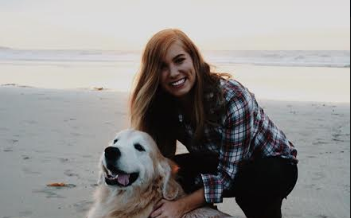
by Kathryn de Bruin | Jul 1, 2019 | Anxiety, Family Therapy, Therapy
Breathing is one of the most natural and healthful functions of the body.
The inhalation of oxygen creates the beginning of an exchange as the gas moves into the millions of alveoli in the lungs, then on to the blood in the surrounding capillaries where it moves carbon dioxide from the blood to the alveoli. Breathing is, in most case, automatic.
The brain and small sensory organs signal when oxygen levels are too low or carbon dioxide levels are too high. In response to this signal, the brain increases the speed and depth of breathing. Deep breathing exercises have been used for years as a way of relaxing the body. Anyone who has ever noticed how an infant’s abdomen rises and falls with each breath has experienced the art of proper deep breathing.
Most adults today tend to fill only the upper chest when they breathe and thus miss how the increased oxygen intake relieves tension and improves metal alertness. By employing some of the more popular deep breathing exercises listed below you can strengthen the lungs, relieve bronchitis, improve circulation, oxygenate the blood and minimize the reoccurrence of respiratory ailments.
One of the fastest and most effective stress-relievers is the “4-7-8 breath”
1. Place the tip of your tongue against the bony ridge by your upper front
teeth
2. Breathe in through your nose for 4 counts
3. Hold your breath for 7 counts
4. Exhale through your mouth (making a whooshing sound) for 8 counts
Repeat this cycle 4 times, twice a day

by Kathryn de Bruin | Feb 28, 2019 | Family Therapy
We’re so excited to announce that Ansley Fraser Curtis has joined our San Diego Therapy Team!
We wanted to do a little Q&A with our newest member, Ansley Fraser Curtis, to get to know a bit more about her and her journey as a therapist!
We’re overjoyed to have you on the team Ansley!
Q: What therapy methods do you practice, and what age groups/demographic do you serve?
I ground and orient my work in attachment theory and with an emotion-focused lens, recognizing that our emotions are often some of our most powerful messages about our needs, desires and how we are experiencing our world. I’m very relationship-oriented and recognize the healing transformative power of relationships, knowing that we heal and grow in the context of relationships with our partners and/or children, with therapists who walk alongside us, and with ourselves. Relationships are the most powerful vehicle of healing. As a practitioner, my style is more eclectic as I pull together common elements of evidenced-based practices (i.e. EFT, TF-CBT, child-centered play therapy, child parent psychotherapy, etc.) to get to the heart of the matter with children and their families in order to help them reconnect to themselves and each other. I specialize in working with children and adolescents, family systems, and in the treatment of trauma.
Q: How did your journey as a therapist start?
Looking back on my life, I’ve always been a relationship-oriented individual who loves to get to know people and listen to their life stories. So in that sense, my journey as a therapist began when I was a young child learning about life and relationships. However, my official journey as a therapist started when I was 16 years old as the reluctant teen who’d been taken to a therapist by her mother. Like many teens, I was not a fan of my mother’s perspective and (like many people of all ages and stages) had major anxiety about talking to a complete stranger about all of the challenges adolescence (or life in general) can bring and sharing my innermost thoughts and feelings. I remember walking away from my first session with a felt-sense of deep validation and compassion that I had never experienced before, and this was a feeling I wanted to give back to others. Through my experience in therapy as a teen, I identified one of my greatest and most central purposes in life: to walk alongside others in their healing journeys with compassion, understanding, and empathy.
Q: What is your favorite aspect of being a therapist?
This is such a hard question because I absolutely LOVE my work! I would say my favorite aspect is creating connections. I truly enjoy getting to know the children and families I work with and consider it an honor to walk alongside families as they work towards creating stronger connections within themselves and with each other. Working as a play therapist is also just really enjoyable!
Q: Are there any influential books, podcasts, or resources you’d like to share?
BOOKS:
“The Emotional Life of a Toddler” by Dr. Alicia Lieberman
“Parenting From the Inside Out” by Dr. Dan Siegel
“Daring Greatly” by Brene Brown
“The Gifts of Imperfection” by Brene Brown
“Tiny Beautiful Things” by Cheryl Strayed
“The Invisible String” (a children’s book about attachment) by Patrice Karst
“The Kissing Hand” (a children’s book about attachment) by Audrey Penn
“The Whole-Brain Child: 12 Revolutionary Strategies to Nurture Your Child’s Developing Mind” by Daniel J. Siegel and Tina Payne Bryson
PODCASTS:
Holding Space by Dr. Cassidy Friedus
Unruffled (Respectful Parenting: Janet Lansbury)
The Modern Dads Podcast
The One In A Million Baby

by Kathryn de Bruin | Feb 24, 2019 | Anxiety, Family Therapy
Struggles with Child Anxiety: Is there really a way through this?
After our first blog entry of the series, I wanted to dive deeper into our family’s journey with anxiety and how we best combat it together. I have a sweet, soft hearted daughter, who can take life too seriously at times. She can err on the side of making others happy at her own expense and gets anxious about things that face her. This child anxiety has shown up at different parts of her development, be it separation anxiety in going to school, fear about monsters at nighttime in her bedroom, or fear about nightmares disrupting her sleep.
1. I Soothed Myself as a Parent
Seeing her develop these fears was so scary for me, because I’ve struggled with anxiety during my life. The last thing that I’ve ever want is for her to struggle the way that I have. And so I teetered on panicking when she started symptomizing and going to the worst case scenario – my daughter has an anxiety disorder and will struggle throughout her lifetime with this. After getting support for myself, I was able to make the switch to believe that I would be able to soothe her and could say to myself, my daughter is anxious at the moment (which is developmentally on par), but I can parent her through this and teach her how to manage these symptoms from early on, and she will be stronger and wiser growing up with learning how to
manage these challenges.
2. I Let Her Emote
She’s such an emotional little girl, and when she would emote and seem so sensitive I would start to worry, going into futuristic thinking. Anxiety always takes us into the past or the future, where we can’t fix anything. It’s important to recognize this and to stay in the present. I took a deep breath and picked her up in these moments. I let her sit on my lap and just held her tight. I’d say something my mom would say to me, “hold me tight and squeeze all the sadness into me”. Eventually her breathing would calm, and I could wipe her eyes. After leaning in, in this way time and time again, I can confidently say that it’s rare that she emotes in this seemingly intense way anymore. She’s learned to regulate herself a lot better. That’s a skill that children learn through experience, through being soothed regularly.
3. We Developed Rituals
We are a Christian family, and so we started making her bedtime predictable, and we set some rituals in place that she could count on. We pray together each evening, I’d make sure that her closet door is closed, and I tickle her back while we sing a song together. Our song is based on Psalm 4:8 and focuses on a God who is soothing and protective. She’s come to rely on doing this every night and I believe that the structure gives her peace and that the touch soothes her nervous system. The skin is the largest organ we have, and skin to skin contact can be an effective way of soothing.
4. We Built Her Confidence
Helping children to be assertive, and especially to have a ‘come back’, is very important in American culture. When her brother teases her, and always had the upper hand because he’s older and therefor more resourceful with his cognitive brain, I have taught her to stand up for herself. For a long time, after a smart comment from him, she’d run to me crying, looking for me to step in and take care of the situation. Instead of always stepping in, I started walking her through ways to deal with him. I’d ask her, “well do you believe what he said? Is it true? If it isn’t, what is true? What should we say back to him”, and we’d brainstorm a number of comebacks. Things like, “Why are you making a big deal about this? You can’t seem to leave me alone? You’re the one who’s being silly”….and so on and so on. Two years later, these come naturally for her and she can hold her own in social situations. She’s still a sensitive, sweet child, but she’s confident and can assert herself when others are giving her a hard time.
5. Finding Her Intuition
We take time for meditation, to slow down and to listen to the spirit/soul/body. When she’s uncertain about what to do, before giving her answers, I’ll ask her what her gut says, and get her to slow down to listen inside. I believe that this vital for a child to learn, that they have an intuition and that it can guide them in life. This is still rather abstract a concept for her, but we keep practicing this.

by Kathryn de Bruin | Feb 8, 2019 | Anxiety, Family Therapy
Having a child who develops symptoms of anxiety is awful. We worry about our children, but even worse, we feel so helpless as parents when we don’t know how to soothe them.
Soothing children is a primary function of being a parent, and so we end up feeling powerless when we can’t do so. We try our best to talk them out of the anxiety, to show them logically that what they are afraid of makes no sense. But the more we seem to talk them out of the anxiety, the more anxious they seem to get. And where does this leave us? If we can’t explain to them that their anxiety is irrational, then how do we help them? There is nothing rational about anxiety, it’s not a problem that we can fix by being rational. The good news is, that there is a lot that can be done. The body cannot be anxious and relaxed at the same time, and so learning how to soothe and bring the nervous system into a state of calm, will diminish the anxiety. There are countless ways of doing this and you can learn how to master these.
Anxiety is the most common emotional childhood disorder, and so learning to help children overcome this is important and will equip them with life-long skills. In fact, most adults can relate to having felt anxious at some point, and so you have the best resource within yourself, relating to how they feel in these moments of terror, and letting them know that they are not alone. Anxious moments are also common to growing up, almost like growing pains are to growth. They come during the various life stages and can be momentary as we adjust to the new challenges that life presents. Putting these symptoms into perspective, distinguishing when they are diagnosable vs a developmental growth phase is important. But either way, there is a lot to be learnt in how to reduce anxiety, which will equip you with valuable tools in managing life. Learning these tools goes hand in hand with slowing down when these symptoms arise, to evaluate your life style, to reduce stress, to listen to your child in a new way and to figure out what they need in order to be the very best version of them.
Start with learning as much about the anxiety as possible. Slowing down and tracking the symptoms, will be helpful in determining the cause of the anxiety, which will be helpful in treating it. The slowing down can be especially difficult, because anxiety breeds anxiety. We start to feel anxious ourselves that our children are anxious. And if we get caught up in a stressed-out brain and system, then we can’t see things and think clearly enough to figure out where the solutions may lie. As the airplane philosophy always reminds parents, put the oxygen mask on yourself before you place it on your child. The same philosophy applies here. You are often your child’s regulator, and so breathing deeply and calming yourself down first, will go a far way in you being able to soothe to your child.
So let’s rally together, there’s a lot I’d like to share. Journey with me through this blog series, and let’s get the best of the anxiety that plagues your family.

by Kathryn de Bruin | Jan 28, 2019 | Therapy
Families in the area are Navigating Emotional Health so beautifully through the use of San Diego Therapy!
Having practiced as a Marriage and Family Therapist and a part of San Diego Therapy for over ten years, I can see the culture changing when it comes to family life and approaching therapy.
I’m so proud of this city and the emotional health that I see around me.
I’m so impressed with the families in this city and how intentional people are in growing emotionally intelligent children.
The kinds of intake calls that I have received over these past ten years of providing San Diego Therapy has changed dramatically, indicating the shift in how people are approaching emotional health. At first the calls I’d receive were mostly parents calling to request treatment for their children. The ‘can you fix my child’ philosophy, and I would need to spend a lot of time on the phone explaining that I didn’t work with children alone, that I would need to meet with parents first. That parents should want to know who their child was meeting with, and should request updates to their child’s treatment. That parents should interview the therapist first and make sure they felt comfortable about who’s hands they were entrusting their children to.
About five years ago, the requests began to change. Instead parents were calling in asking for family treatment. “Can you help us as a family?”, with parents more than willing to be involved in treatment, and understanding they should attend the first session on their own. When I explained that I always assess a child in the context of their family system, this started to make more sense to parents too, and they easily engaged in the systemic treatment process.
Most recently I’m seeing parents be more proactive in getting help. As many parents consider getting a divorce, they are coming in to consult with me so that they can best prepare their children for the news. Some even come in to get information about how to tell their children, and how it might affect their children, before they make the final decision about their marriage (click here to see related blog articles and Youtube interviews about this issue!) And so this gives me so much hope for the world that we live in. I think that healthy societies are made up of healthy families. San Diego can be a tough city to live in relationally, as far as the culture goes and often times the lack of extended family support. But I, as a family therapist, love being here to help support your families. And I think, San Diego, you’re progressing just beautifully!
It seems that raising children with emotional intelligence has really become a goal for parents, and this is likely because the public is more educated about emotional health. I think that books like ‘Raising Emotionally Intelligent Children’, ‘Parenting from the Inside Out’ and Siegel’s newer book ‘Mind Sight’ have been so helpful in educating the public and giving them practical skills.
I wonder if having a city full of MFT’s has also made a difference. It’s said that you can’t throw a stone in San Diego without hitting a therapist. Perhaps with so many people in therapy crushing the stigma of seeking help, and having so many MFT’s who are passionate about family health, has made a difference in spreading the word about the resources that are available.
I am grateful to my colleagues for the amazing work that they do with families and children. I am blessed by these fellow therapists in the San Diego area for their continued support and inspiration – and love sending recommendations their way! Lori Underwood Therapy is one of my all time favorite referrals, as she does such effective work in her clinical practice. Mary Cipriani-Price at San Diego Institute for Couples is one of the pillars in the therapeutic community. Mary trained most of us therapists, and has been instrumental in raising up therapists for many years. I also think of amazing powerhouse Jennine Estes and her group of therapists and Associates at Estes Therapy. They are quick to respond and are all so well trained, and have inspired me in the importance of spreading the word about therapy (check out their amazing marketing!) And of course, Jussi Light at New Growth Counseling in Carlsbad is always my top referral source for North Country families! He has so much experience working with families and teens and a skillful & sharp clinician who is not only well-known, but well-liked!
Bethany Noble Lindsay and her partners at Cultivate are serving the community in such a wonderful way. I especially love hearing about her amazing work with teens & young adults in the area! Rebecca Bass-Ching at Potentia Family Therapy , focuses on such important work at providing help to those who struggle with food & body issues. Her message of being all in it together, and the importance of saying goodbye to shame in your life has truly shaped the area for the better. Jennifer Chappell March of Chappell Therapy is a friend & colleague in the EFT field, and runs an effective practice focusing on couples and relationships. She truly excels at providing specialized couples treatment! And Elaine Martens Hamilton at Soul Care House runs the most wonderfully warm practice, with well-trained clinicians that offer help in a wide range of issues. Not only is she an incredible therapist – but an author and offers a podcast as well!
All in all, San Diego Therapy & Families, you are well on your way in being an emotionally healthy city… and you have the most wonderful resources to support you in this endeavor!





